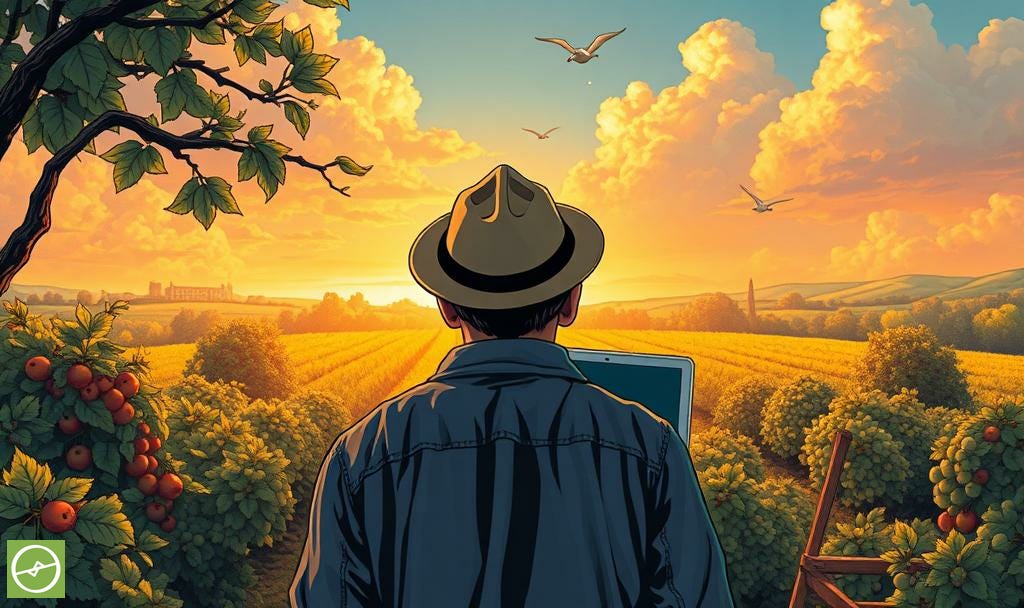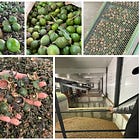Why does AgTech Software Feels So Hard to Use? Here's What We Can Do About It.
Poor training, weak support, and sales-first attitudes are slowing AgTech adoption. Here's what needs to change to help farmers get real value from digital tools.
I’ve spent around two decades working in customer-first, customer-service roles across several industries, in multiple countries. Paid jobs, consulting, NGO work, and volunteer opportunities alike.
These are some of my hot-takes on why AgTech software innovations specifically struggle to gain traction and take hold - and why some actually do, and succeed.
There’s a familiar cycle that plays out across orchards and farms when new technology arrives…
It usually starts with interest.
A promising tool is pitched – maybe by a trusted advisor, a tech partner, or a demo at a conference.
It claims to save time, improve yields, simplify scouting, or help plan inputs more precisely.
But after sign-up or installation, enthusiasm fades fast.
And before long, that promising piece of AgTech quietly slips into the background, unused.
The problem? Not only software complexity; but also about how poorly agri customers are supported through the adoption process.
Where It Goes Wrong
Across the agricultural software landscape, many of the same pain points come up:
Training videos are long, boring, outdated, or irrelevant.
They’re often recorded in office settings, by those with little context of being on-farm, and video commentary doesn’t reflect the reality of day-to-day operations.Examples don’t feel grounded.
Most training content shows button clicks and workflows, but not how to practically apply them during harvest, irrigation planning, or pest scouting.Support channels are slow and generic.
Queries get routed to tickets. Replies feel templated. And valuable time is lost when fast decision-making is needed. Support tickets pin-ball between internal teams - lost in the void of inefficient customer service processes not optimised for service at scale.Sales and support roles blur.
Early contact feels like a pressure pitch rather than real help – leading to frustration and disengagement. Salesmen field support enquiries. Support staff are loaded with acquisition responsibilities to makeup for the attention shortfall. It’s a vicious cycle. Usually there is either a product problem, where the tech is not intuitive, or the pressure of a forced sale too prevalent.Adoption lags. Everyone suffers.
Tools are downloaded, trialled, but not fully embraced – or worse, abandoned entirely. It’s immensely disheartening for the AgTech company and their would-be customer alike. Trust fades. Enthusiasm withers. The very nature of the tech needs to bring forth engagement almost naturally, and hold that attention.The fear of “switching” holds people back.
Producers worry about time wasted, team frustration, and whether a new platform is actually worth the disruption and distraction. There is internal conflict for the torch bearer, “…what about the reputational fallout if this all goes wrong?”
Unfortunately, even when adoption does happen, it’s often shallow, or as part of an upper management mandate, roll-out followed “just because”.
As such, powerful tools (seriously innovative and useful) remain unused. And simply because no one explained them properly, or because the features were buried behind poor UX and over-complicated menus. Interface clutter. Navigational horrors. Unappealing interfaces, and “just too many steps, or clicks”.
"We’re not failing at innovation – we’re failing at translation. The solution isn’t more features. It’s better connection."
It’s Not the Tools – It’s the Teaching
AgTech has come a long way in the last decade.
There are genuinely helpful tools on the market. Platforms that track crop health, model yield, predict pest outbreaks, and optimise inputs, and help to manage labour and resources. Enhanced stakeholder connectivity, reporting, data acquisition, AI-based enhancements, and the list goes on.
But many of them are falling flat in the field – not because they don’t work, but because they haven’t been introduced very well. Either by nature of their very design, or simply due to a lack of an educated human touch. This desperately needs to happen so that farmers can trust, absorb, and take action.
We’re not failing at innovation. We’re failing at translation.
How intentions translate into understanding.
How the tech translates into action.
What Needs to Change
Here’s how we start turning the tide – grounded in what works for real-world agricultural producers:
Training must be real-world first.
Use crop-specific, context-specific examples – show a macadamia producer how the feature applies during nut drop, not just what the button does. Where will they likely be saving time, money, and effort? What’s the general Return on Investment?
Short-form, scenario-based content wins.
Replace 45-minute walkthroughs with 2-minute clips showing real tasks and common mistakes – in situ and ideally mobile-friendly for easy viewing and even easier sharing.
Support should be proactive, not reactive.
If the system detects inactivity or conflicting user actions, it should trigger a timely tip, call, or an in-app guide. These processes should be largely automated. Human tech-use QC if you will.
Sales teams need to serve needs and address pain points first, sell second.
Early conversations should focus on understanding farmer needs and helping customers in gaining value – not pushing upgrades or superfluous add-ons.
Feature discovery needs rethinking.
Use progressive onboarding that reveals new features over time, and highlight underused tools with well-timed nudges based on actual usage patterns. Be transparent and timely with product updates. Communicate. Stay close to the customer, but unobtrusive. It’s a balance.
Faster, localised feedback loops.
Farmers (actually any kind of customer) needs to feel heard – with easy ways to provide input and see solutions to challenges reflected in technology updates. The power of listening and taking action has not gone out of fashion, but it’s often forgotten.
The Cost of Getting It Wrong
Poor training and inconsistent support don’t only slow adoption – they shape perception.
Once a platform is seen as clunky, confusing, or “not worth the effort,” it becomes much harder to reintroduce it later. Word spreads (even when largely false). Teams resist. Adoption suffers.
Genuinely useful tools can fail because the rollout fell flat. It can be brutal.
For every well-intentioned tech founder or product manager, there’s a frustrated farm team wondering why the app they were told would “save time” now feels like one more thing to manage among a thousand other things.
The Opportunity Ahead
For AgTech to scale meaningfully – especially in the perennial crop and high-value horticulture space – we need to meet farmers where they are.
That means clear training, grounded examples, localised support, and platforms that earn trust instead of demanding it up front.
The future of farming is digital, yes – but it’s also practical, relational, and rooted in place. Now and in the days to come.
If we want software to become an everyday tool in the farm toolkit, it needs to feel like a helping hand, not a chore.
What can you do?
Whether you are a customer, and advocate, a developer, or a startup… it all starts with frank discussions, clear communication, and empathy. Being upfront, and talking plainly. It comes from the human touch, and a genuine respect for one another and the pull to create high impact solutions.
Do your part, speak up. Create a resource. And always strive for better. Do it with kindness, with mindfulness. And repeat.
You Might Also Like:
Action Bias in Agriculture: Why Forward-Thinking Farmers Embrace Technology First
Action Bias, Psychology, and the Path to Progress







